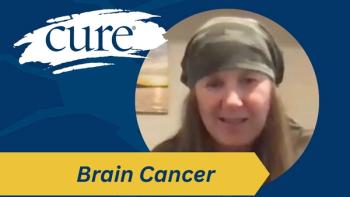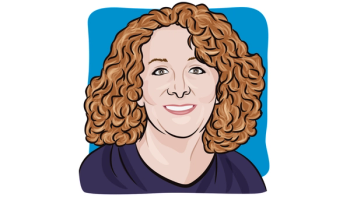
Community-Based Activity Programs Improve Outcomes, Quality of Life in Underserved Breast Cancer Survivors
Medically underserved and minority breast cancer survivors experienced improved outcomes and quality of life after participating in community-based physical activity programs, according to recent study results.
Minority and medically underserved breast cancer survivors experienced significant health benefits after participating in a community-based physical activity program, according to recently published study results.
The data — which were published in the journal Cancer — demonstrated that participation in a 12-week program that was tailored to individuals in a community setting improved several mental and physical health outcomes among a diverse group of breast cancer survivors.
The program, known as Active Living After Cancer, consists of 12 weekly group sessions which provides survivors with training in cognitive and behavioral skills for behavior change, brief physical activity, and cancer survivorship-related content.
This particular program was adapted from an evidence-based plan and tailored to individuals who are of minority race or more prone to being medically underserved.
Karen Basen-Engquist, a co-author on this study and a director of the Center for Energy Balance in Cancer Prevention and Survivorship at The University of Texas MD Anderson Cancer Center in Houston, explained in an interview with CURE® that not all cancer survivors have the adequate means to access fitness resources, such as a gym or personal trainer. As a result, this program was developed and offered to participants for free. The program was also offered in Spanish as there aren’t many programs that have that benefit, she said.
This study included 127 breast cancer survivors. Participants completed assessments of their physical activity, quality of life and physical functioning (six-minute walk distance and 30-second sit-to-stand test) at the start of the trial and at a 12-week follow-up.
Regaining Strength
Physical activity significantly improved from 172.8 minutes per week at the start of the trial to 344.6 minutes per week at follow up. Basen-Engquist explained that this was an important improvement not just for the management of symptom, but also because there is additional research that those who are physically active are less likely to die of cancer.
Debbie Mendoza, who was diagnosed with metastatic breast cancer in February 2019, completed her treatment in March 2020 and was left without any energy. She participated in the Active Living After Cancer program and noted that she benefitted from it. Before the program started, she said she could only walk up her street and back — now she is walking a mile and a half or 30 minutes with her dog every day.
“For me, I got lots of confidence, I feel much stronger now,” Mendoza said in an interview.
The study results also demonstrated that distance in the six-minute walk and the sit-to-stand test improved significantly from the start of the trial to follow up.
Of note, cancer survivors often go through an accelerated aging process, Basen-Engquist explained, meaning they tend to physically and mentally age more after a cancer diagnosis. The improvements in six-minute walk and sit-to-stand test are important, according to Basen-Engquist, because that activity can reverse the aging process and allow survivors to return to performing daily tasks.
“If we can help improve people’s performance on tests like these, this indicates that maybe we’re starting to arrest that accelerated aging and reverse it,” she said.
There were also statistically significant improvements in physical and
Sense of Community
Mendoza was just finishing her treatment when the COVID-19 pandemic was beginning. Because she was immune compromised, she could not see many people. However, she noted that the program gave her a sense of community. She said it was good to talk to people online who were going through the same journey.
“We were really happy to see that when it’s done in kind of a real-world setting, that we still see that the program is effective,” Basen-Engquist added.
Basen-Engquist also highlighted that physical activity may be beneficial for all breast cancer survivors, regardless of race, because it has been shown to reduce the risk of a chronic disease associated with a cancer diagnosis. She explained that breast cancer survivors, diagnosed with stage 1 to 3 disease, are more likely to
“In addition to potentially affecting the cancer-related outcomes, we’re also having a positive influence on other chronic diseases,” Basen-Engquist noted.
Recommendations for Breast Cancer Survivors
After the 12-week program ended, 83% of participants implemented two or more behavioral changes they had learned during the program into their life. Almost all the participants (98%) were satisfied with the program and would recommend it to another cancer survivor. Moreover, most participants reported that the program helped them become more physically active (97%) and feel better physically (92%) and emotionally (83%).
Mendoza is one of the many participants who implemented these changes after the study ended, and physical activity is now a part of her daily routine. Before the program started, she didn’t believe that exercising would give her more energy, because she didn’t have energy to exercise in the first place. When the study had finished, she said she was doing a form of physical activity about four times a week, which has now increased to every day.
Basen-Engquist recommended that breast cancer survivors who want to become more active to talk to their oncologist and see what resources are available to them. A great place to start, she noted, is to walk, and then incorporate longer walks or brisk walks for 10 minutes at a moderate pace.
For more news on cancer updates, research and education, don’t forget to




